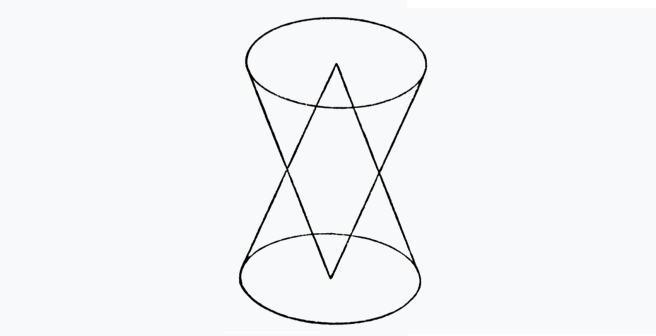In the introduction to his profound work on the cinematic image, Signatures of the Visible, Fredric Jameson writes, “The visual is essentially pornographic, which is to say that it has its end in rapt, mindless fascination.” Explicit pornography is thus the acknowledgement of the true nature of the filmic image, a “potentiation” of its call to “stare at the world as though it were a naked body.” There is no doubt in my mind that, from the perspective of the Traditional School (with Coomaraswamy and Guenon as exemplars), that the visual abjection that Jameson attributes to cinema is simply the culmination of what one might refer to as the ‘ocularization’ of human civilization in the course of Humanism, the Enlightenment and Modernism.
Exemplified by the entrenchment of single-point perspective as the representation of reality (indeed as reality itself!) in art of the European Renaissance, this ocularity has permeated all aspects of social, cultural and political life in the mainstream of our civilization. Jameson orients his critique towards the centrality of images in consumerist society, wherein our very sense of being in the world is first and foremost visual. He says, “our society has begun to offer us the world … as … a body, that you can possess visually, and collect the images of.” It is this very photographic and pornographic ontology that Marcel Duchamp had earlier articulated and developed through his oeuvre. In all his work, be it his readymades, the Large Glass and most profoundly, in Etant Donnes, this obscenity, inherent in the image is both indexed and exploited.
This critique of visuality and the nature of the image is the impetus for my own The Failure of Marcel Duchamp/ Japanese Fetish Even! (1996). According to Tyrus Miller, underlying the various senses of Duchamp’s use of the word ‘delay’ in connection of the work The Bride Stripped Bare by her Bachelors, Even is that the glass of the so called ‘ Large Glass’ is a medium in which and through which ‘delay’ is realized and manifested, “by virtue of its material properties of transparency, reflectiveness, and refraction of light, and hence, by implication, the splitting of a present act of seeing into temporally different streams, ranging from maximum to minimum delay in the passage of light.” Indeed, I saw the slow download speeds of the early WWW as a vivification of Duchampian ‘delay.’
Further, like Jameson, I saw that the fight about power and desire had to be brought to that place “between the mastery of the gaze and the illimitable richness of the visual object.” In making The Failure of Marcel Duchamp/ Japanese Fetish Even!, I took my own object to the site of Duchamp’s notorious diorama, Étant Donnés, and made an intervention and a photograph. My image was later digitally composited with a pornographic one appropriated from the internet and offered as an online presentation which was inaccessible without the conscious intention of the viewer. If the viewer chose ‘to proceed,’ this gave rise a slow download of the new image, delayed by the bandwidth of the Internet of the day! The first commercial modem, was introduced in 1962 by AT&T and had a download speed of 300 bits per second. By 1994 speeds had reached at 28.8 kilobits per second and in then 1996 the 56K modem was invented. Very slow in comparison to speeds we are familiar with today. For instance, my provider in Vancouver offers fiberoptic data plans with 75mega bits per second (MBPS), 940mbps and 1500mbps download rates.
Also of note is the fact that in January of 1996, 5 years after Tim Berners-Lee published the first ever website and also the year in which The Failure of Marcel Duchamp/ Japanese Fetish Even! premiered at ISEA, there were, according to one source, only 100,000 websites (unique hostnames) on the World Wide Web (an alternative figure for that year is 257,601 websites). Today (as of August 2021), there are well over 1.5 billion websites. Of these annual numbers, 75% are believed to be inactive sites or parked domains.
https://thecharnelhouse.org/wp-content/uploads/2017/09/Fredric-Jameson-Signatures-of-the-Visible-1992.pdf
https://modernistreviewcouk.wordpress.com/2020/07/03/a-delay-in-glass-marcel-duchamp-the-possible-and-the-aversion-to-deja-vu/
https://whirlpool.net.au/wiki/d_u_m_h


You must be logged in to post a comment.